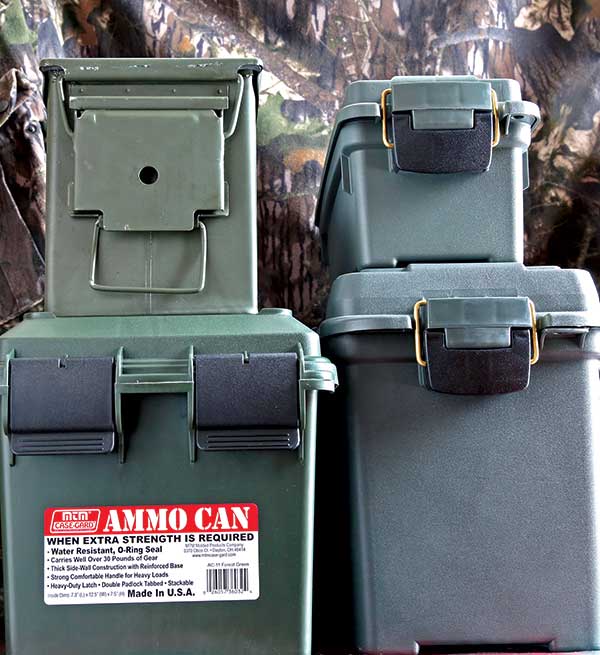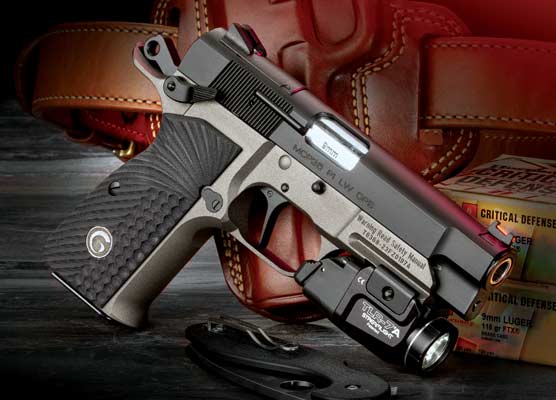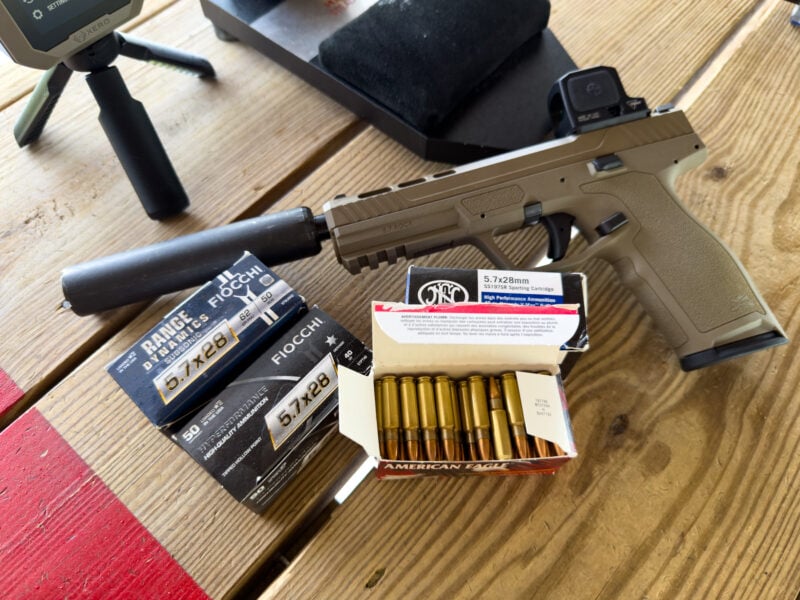Ammo Storage:
Myths, Mistakes and Common Sense
There are two main issues involved in storing ammunition; environmental conditions for maximum longevity and safety and legal issues. Modern smokeless ammunition, stored in the right conditions, lasts almost indefinitely. Cool, dry, dark and reasonably consistent are what you’re looking for. In terms of temperature and humidity, ammunition and people like similar conditions, although ammunition does best at the lower end of the range. Consistent temperatures in the range of 50–80 degrees F., humidity in the range of 10 percent to 50 percent work fine. Rapid temperature changes can cause condensation to form. Moisture inside the case does powder and primer no good at all and may degrade performance.
Light itself won’t do any harm, but the heat from sunlight will cause the temperature to fluctuate. We see this in vehicles, so other than transporting between locations, don’t leave ammo in vehicles.
For storage in your home, don’t store ammo in the same location as household cleaners or other chemicals. Vapors from some chemicals like paint thinner and ammonia could seep in and degrade primers or powder. If humidity is a problem you may need dehumidifiers, or airtight storage boxes containing a desiccant.
Military surplus ammo boxes are a good choice, provided the seals are still airtight. MTM “dry boxes” are made of plastic, lightweight and quite strong, and with moisture-resistant seals. Plano also makes good ammo boxes, sold under both their name and under the Cabela’s label. Keep them open next to your dehumidifier until the humidity level is low, and toss in a couple of desiccant packs before closing. Use a marking pen or label to identify the contents so you don’t keep opening them!
Think security too. No one but you, or those you authorize, should have access to your firearms or ammunition. Ammunition should be stored in a locked room, closet, cabinet or container. Depending on where you live this may be a legal requirement, in any case I think it’s common sense.
Myths
There are a lot of myths about ammunition, often promulgated by television and movies. Some people believe if a box of cartridges, or an individual cartridge, is dropped onto a hard surface, it might “explode.” Or if cartridges are set off in a fire, the bullets will go whizzing about with the same velocity as if they were fired from a gun. The odds of a cartridge going off from being dropped are remote, and in any case it won’t “explode.” Keep cartridges in the original packaging until used, if you can, as the packaging protects the cartridges if dropped.
Modern smokeless powder is not an explosive. Gasoline is an explosive, so is black powder. Smokeless powder is a combustible solid — like paper. Also like paper, when ignited, it doesn’t explode, it burns. In regulations regarding transportation and storage, smokeless powder is defined as a propellant rather than an explosive. When smokeless powder burns it gives off heat and a large volume of gas. When it’s confined, as in the chamber of a gun, the volume of gas builds up pressure very quickly. In a firearm the pressure from the gas accelerates the bullet down the bore and is released at the muzzle once the bullet exits.
Surprise!
What happens if the cartridge is not confined? This may come as a disappointment, but it’s actually not very exciting. Say the primer is set off by a fire. The powder begins to burn and builds up pressure. It takes a relatively small amount of pressure to separate the bullet from the cartridge case. The powder gases and heat are then released into the atmosphere. When the two components separate, the heavy bullet doesn’t move as far as the lighter case. The bullet might move a foot or two, the case maybe several feet. In tests with handgun cartridges electrically fired inside a cardboard box neither bullet nor case had enough velocity to do more than dent the cardboard.
Certainly there is a potential for injury. Rifle cartridges with larger powder charges might give the case enough velocity to cause damage. Sometimes the pressure is enough to push the primer cup and anvil from the primer pocket. These components are so light they might achieve enough velocity to make a whizzing sound, sometimes mistaken as the sound of a bullet. Even though they are very light and carry little energy, the primer could cause an injury, especially if they struck an eye.
It’s also a good idea to mark the date acquired on each box. Practice what accountants call “FIFO” — first in, first out. Although properly stored it has a long shelf life, it’s best to use your older ammunition first for practice. This does not apply to the cartridges in your personal and home defense firearms. For these cartridges, LIFO — last in, first out — should be the rule.
The Sporting Arms & Ammunition Manufacturers’ Institute (SAAMI) has an informative leaflet entitled “Small Arms Ammunition — Properties & Recommendations for Storage and Handling”. I sometimes see it at gunshops and you can likely find it online.





